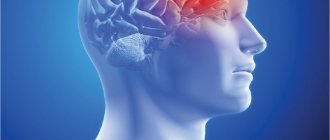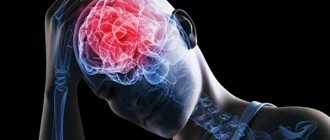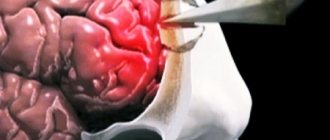Determination of the severity of harm caused to health due to existing bodily injuries is carried out within the framework of a forensic medical examination.
The concept of harm to health in this case is interpreted as a violation of the integrity of human tissues or organs, a violation of the functional state of limbs or organs, as well as diseases or other pathological conditions caused by bodily injuries. A forensic medical examination to determine the severity of harm caused to health due to existing bodily injuries can be initiated by a resolution of representatives of investigative bodies, inquiry bodies, or a court order. The prosecutor's office, the Ministry of Internal Affairs or the court may issue a written order to conduct a forensic medical examination. In terms of the procedure, these two studies are practically no different from each other. However, the result of the examination is an expert opinion, and the result of the examination is a medical examination report. This act does not have legal evidentiary force, therefore, in most cases, an examination is prescribed to determine the severity of the harm caused to health due to existing bodily injuries.
The severity of harm to health is determined by the following characteristics:
- The danger of the inflicted bodily harm to the life of the victim.
- Total duration of health disorder.
- Stable disability.
- Loss of an organ (limb) or cessation of functioning of an organ (limb).
- Loss of hearing, vision or speech.
- Complete loss of professional ability to work.
- Mental health problems, drug or toxicological addiction.
- Irreversible facial disfigurement.
- Abortion.
To determine whether harm to health has occurred, the presence of at least one of the listed characteristics is sufficient. If there are several signs, the severity of the harm caused to health is determined by the most severe of them. Life-threatening conditions are those that can lead to death.
It should be noted that irreversible facial disfigurement is not a medical concept, so establishing this characteristic is not within the competence of a forensic expert.
Life-threatening serious harm to health
Injuries that are life-threatening to the victim are usually divided into two groups. The first group of bodily injuries dangerous to human life includes:
- Penetrating wounds of the head (skull). Regardless of whether the brain was damaged.
- Fractures of the base of the skull and bones of the cranial vault, with the exception of isolated cracks of only the outer plate of the cranial vault, as well as fractures of the bones of the facial part of the head.
- Severe brain contusions, as well as moderate ones, if there are signs of damage to the brainstem.
- Penetrating spinal wounds, regardless of whether the spinal cord is involved.
- Fractures of the cervical vertebral arches, including fractures-dislocations.
- Unilateral fractures of the arches of the first and second cervical vertebrae, regardless of whether the spinal cord is damaged.
- Subluxations and dislocations of the cervical vertebrae.
- Fracture-dislocation or fracture of one or more thoracic or lumbar vertebrae due to impaired functioning of the spinal cord.
- Injuries in the neck with penetration into the larynx, esophagus, trachea, lumen of the pharynx or damage to the thymus and thyroid glands.
- Injuries in the chest area with penetration into the pericardial cavity, into the pleural cavity or into the mediastinal tissue. Regardless of damage to internal organs.
- An abdominal wound penetrating into the peritoneum.
- Injuries to the abdomen with penetration into the intestines (except for the lower segment of the rectum) or into the bladder cavity.
- An open wound of the pancreas, kidneys or adrenal glands.
- Rupture of any internal organ, including the ureter, membranous section of the urethra, and prostate gland.
- Double fracture of the pelvic ring in the posterior and anterior parts with loss of continuity. Or a bilateral fracture of the posterior pelvic half-ring with loss of continuity of the pelvic ring and rupture of the iliosacral joint.
- Open fracture of the humerus, femur or tibia (long tubular bones), open injuries to the knee and hip joints.
- Violation of the integrity of the main blood vessels (aorta, large arteries and corresponding veins).
- Thermal burn of the third or fourth degree with the affected area exceeding 15% of the skin. Third degree thermal burn with damage to more than 20% of the skin. Thermal burn of the second degree with damage to more than 30% of the skin.
The second group of life-threatening bodily injuries includes injuries that resulted in conditions that threaten human life. Such conditions include:
- Severe shock of the third or fourth degree.
- Coma caused by various reasons.
- Extensive bleeding and large blood loss.
- Collapse, severe cerebral circulatory disorders, acute heart failure, acute vascular failure.
- Acute renal failure.
- Acute liver failure.
- Severe degree of acute respiratory failure.
- Purulent-septic tissue lesions.
- Circulatory disorders causing internal organ infarction, thromboembolism, gas or fat vascular embolism, gangrene of the extremities.
- A complex of several conditions that threaten the life of the victim.
Penalty for mild concussion
One of the complications of such an injury is the development of inflammation of the sphenoid sinus. These signs can be observed with a mild concussion or bruise of the brain; they are regarded as causing harm of moderate severity due to the delayed consequences of the damage and an unfavorable outcome, which can lead to permanent loss of performance. For moderate brain contusions, it is necessary to evaluate brainstem symptoms and the duration of the health disorder. If there are no signs of damage to the trunk and the health disorder lasted less than 120 days, the damage is assessed as moderate.
If a concussion affects the functions of the medulla oblongata, midbrain and cerebellum, then only severe harm to health, and in no case any minor harm. This is due to the development of danger to life at the time of injury.
The condition for the use of this composition is the infliction of physical pain by the actions of criminals. In this case, pain and suffering must be caused by the actions themselves, and not by their consequences. Example: Hitting a wall due to the victim being pushed will not be considered battery. But the actions that consisted of being dragged around the room by the hair, hit in the face, etc. - just fit within the framework of Article 116 of the Criminal Code of the Russian Federation. In my practice, there was a case when parents forced a child to kneel in a corner for a long time, thereby causing him physical pain. The actions of the mother and father in this case were qualified precisely as beatings inflicted on their minor child.
If you write a statement about beating, then an examination will be ordered by law enforcement agencies. What to do when contacting the police:
- How to stop beatings and bring the offender to justice? Write a statement with a detailed description of the crime, the characters involved, the methods of inflicting pain and the locations of the blows.
- Examination by an expert in the direction of the police, followed by a conclusion on the severity level.
If you decide to identify harm yourself, then you should adhere to the following algorithm:
- Visiting a clinic, hospital, or emergency room.
It goes away on its own after a few days, but persistence of symptoms is a more serious injury.
- Bruise in varying degrees of severity.
- Damage to white matter as a result of braking force. Accompanied by small focal hemorrhages and axonal separation.
- Compression - occurs when the space of the cranium decreases.
- Intracranial hemorrhage is divided into subarachnoid, intracerebral, ventricular and epidural.
4.1. Hello! “Criminal Code of the Russian Federation” dated June 13, 1996 N 63-FZ (as amended on November 12, 2018) of the Criminal Code of the Russian Federation Article 112. Intentional infliction of moderate harm to health
1. Intentional infliction of moderate harm to health, not dangerous to human life and not entailing the consequences specified in Article 111 of this Code, but causing long-term health disorder or significant permanent loss of general working capacity of less than one third, is punishable by restriction of freedom for a term of up to three years, or forced labor for a term of up to three years, or arrest for a term of up to six months, or imprisonment for a term of up to three years. (as amended by Federal Laws dated December 27, 2009 N 377-FZ, dated March 7, 2011 N 26-FZ, dated December 7, 2011 N 420-FZ) (see text in the previous edition)
6.1. Hello Andrei!
This situation is not an accident. In addition, it is hardly possible to establish a cause-and-effect relationship between the fact that you cut off the bus and the girl’s injury.
10.2. Svetlana, in your case, the amount of punishment will directly depend on the severity of the harm caused to your mother’s health by a forensic expert, since the legal qualification of your ex-husband’s actions will depend on this. In most cases, there is slight harm to health. Then, in accordance with paragraph 1 of Art. 115 of the Criminal Code of the Russian Federation
1. Intentional infliction of minor harm to health, causing a short-term health disorder or a minor permanent loss of general ability to work, is punishable by a fine in the amount of up to forty thousand rubles or in the amount of the wages or other income of the convicted person for a period of up to three months, or by compulsory labor for a term of up to four hundred. eighty hours, or correctional labor for up to one year, or arrest for up to four months. If the expert comes to the conclusion that moderate harm to health has been caused, then: 1. Intentional infliction of moderate harm to health, not dangerous to human life and not entailing the consequences specified in Article 111 of this Code, but causing long-term health problems or significant permanent loss total working capacity by less than one third - is punishable by restriction of freedom for a term of up to three years, or forced labor for a term of up to three years, or arrest for a term of up to six months, or imprisonment for a term of up to three years. (Part 1 of Article 112 of the Criminal Code of the Russian Federation)
Moderate health damage
The qualifying characteristics of the average severity of harm caused to the victim’s health are:
- There is no direct danger to the life of the victim.
- Absence of severe conditions characterizing harm to health as serious in consequences.
- Long-term health disorder (loss of ability to work for more than 21 days).
- Persistent loss of ability to work by no more than one third (from ten to thirty percent inclusive).
Classification
In medical terminology, skull injuries are distinguished by severity, depending on the clinical form and combination of injuries.
According to the degree of severity, they are distinguished:
- A mild one is a concussion or bruise of the brain.
- Moderate – moderate brain injury.
- Severe – acute compression of brain tissue and severe brain injury.
Another classification includes a combination of injuries. I distinguish between isolated cases, in which the patient only experiences damage to the cranial bones. Combined - combined with trauma to other organs, and combined - when the mechanism of injury combines several types of effects (mechanical, electrical, thermal, radiation).
For clinical variation, we can distinguish:
- Fractures.
- A concussion is a health injury caused by mechanical impact and a violation of neurological functions. It goes away on its own after a few days, but persistence of symptoms is a more serious injury.
- Bruise in varying degrees of severity.
- Damage to white matter as a result of braking force. Accompanied by small focal hemorrhages and axonal separation.
- Compression - occurs when the space of the cranium decreases.
- Intracranial hemorrhage is divided into subarachnoid, intracerebral, ventricular and epidural.
For clinical forms, a combination of different types is possible.
Next video on the topic:
The procedure for determining the severity of harm caused to health due to existing bodily injuries
The procedure for conducting an examination to determine the severity of harm caused to health due to existing bodily injuries is carried out in accordance with the guidelines for conducting forensic medical research. The research can be carried out exclusively on documents, but in special cases, as well as in the presence of reliable documents that correctly and fully describe the damage inflicted on the victim. Most often, the examination is carried out with an examination and interview of the victim. The research includes the following stages:
- A thorough interview of the victim, inspection of existing injuries or traces of their infliction.
- Collection of all documents available on the case: medical records from the clinic at the place of residence and the emergency room, examination reports, records of the ambulance team, photographs.
- Examination and interview of the victim.
- If there are internal damages, ultrasound or other special studies are performed (if necessary).
- If important documents are necessary or missing, the expert conducting the examination may request the missing papers.
- Study of all provided documents.
- Drawing up an expert report, which contains the conclusions made by the expert.
In what cases is it advisable to conduct an examination for traumatic brain injuries and facial injuries?
There is a certain set of situations in which the implementation of an examination for traumatic brain injuries and facial injuries is of great importance for resolving controversial issues or obtaining compensation payments. It makes sense to contact experts in the following circumstances:
- It is necessary to establish the amount of damage to health caused through injury received at work.
- It is necessary to establish the severity of injuries received as a result of a traffic accident.
- There is a traumatic brain injury and (or) facial injury received in a domestic environment.
- There is a need to receive compensation based on injuries caused to the victim as a result of military actions.
- It is necessary to conduct a re-examination due to the receipt of new data, as well as on the basis of the recorded long-term consequences of the injury.
What is the legislative framework for the examination of living persons (victims, accused, suspects)?
Federal Law of May 31, 2001 No. 73-FZ “On state forensic activity in the Russian Federation.” Article 25 of the Law describes the procedure for drawing up an expert opinion, as well as the components necessary to be included in it.
Article 111 of the Criminal Code of the Russian Federation describes the signs of intentional infliction of grievous bodily harm, as well as the degree of punishment provided for such a criminal act.
Article 112 of the Criminal Code of the Russian Federation describes the signs of intentional harm to health of moderate severity, as well as the degree of punishment provided for such a criminal act.
Article 115 of the Criminal Code of the Russian Federation describes the signs of intentional harm to health of mild severity, as well as the degree of punishment provided for such a criminal act.
Article 113 of the Criminal Code of the Russian Federation describes the signs of causing serious or moderate harm to health in a state of passion, as well as the degree of punishment provided for such a criminal act.
Article 114 of the Criminal Code of the Russian Federation describes the signs of causing grievous or moderate harm to health in case of exceeding the limits of necessary self-defense or in case of exceeding the measures necessary to detain a person, as well as the degree of punishment provided for such a criminal act.
The procedure for conducting an examination to determine the severity of harm caused to health due to existing bodily injuries is subject to the Rules for determining the severity of harm to health, approved by the Decree of the Government of the Russian Federation of August 17, 2007 (No. 522).
Qualifying features
Qualifying criteria include aggravating conditions of the crime. The corpus delicti necessarily takes into account the premeditation of the action, the number of participants and the motive.
The qualifying signs of causing grievous harm to health in accordance with Article 111, Part 2 and Part 3 include:
- An act against a person in the performance of official duties.
- A crime with special torment and bullying.
- If the actions were performed on a person in a helpless state.
- It was done with danger to society and carrying great destructive power.
- Performed for hire.
- Had antisocial motives.
- Committed by a group – refers to the category of particularly aggravating circumstances.
- Caused death by negligence.
According to this article, a crime that occurs without the above listed qualifying features is punishable by imprisonment for 8 years. In the presence of aggravating circumstances, the court provides for liability for up to 12 years.
According to the last point, when the act entailed death through negligence, two motives are regarded - intentionality of causing harm and subsequent death. For this offense, the offender faces up to 15 years in prison.
With regard to the qualifying characteristics under Article 112 “Intentionally causing harm to health of moderate severity”, the same circumstances are considered as for Art. 111. Exceptions include clauses on execution for hire, creating a public danger and causing death by negligence. A crime without qualifying characteristics is subject to liability - imprisonment for up to 3 years or forced correctional labor for up to 3 years.
In aggravating circumstances under Art. 112 according to part 2 is punishable by arrest for up to 5 years.
Important! In these cases, the assessment of the degree of responsibility is based more on the danger of the act than on medical criteria.










